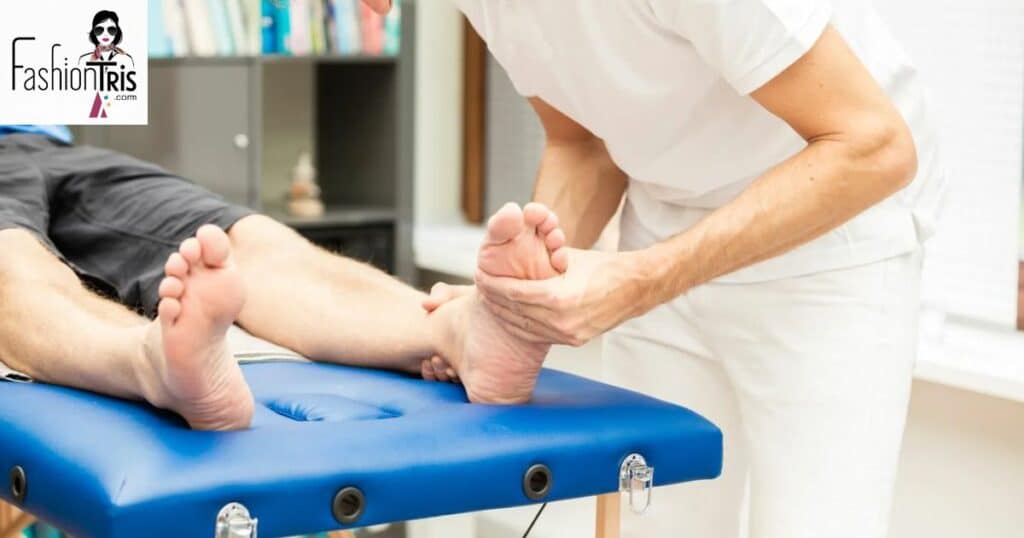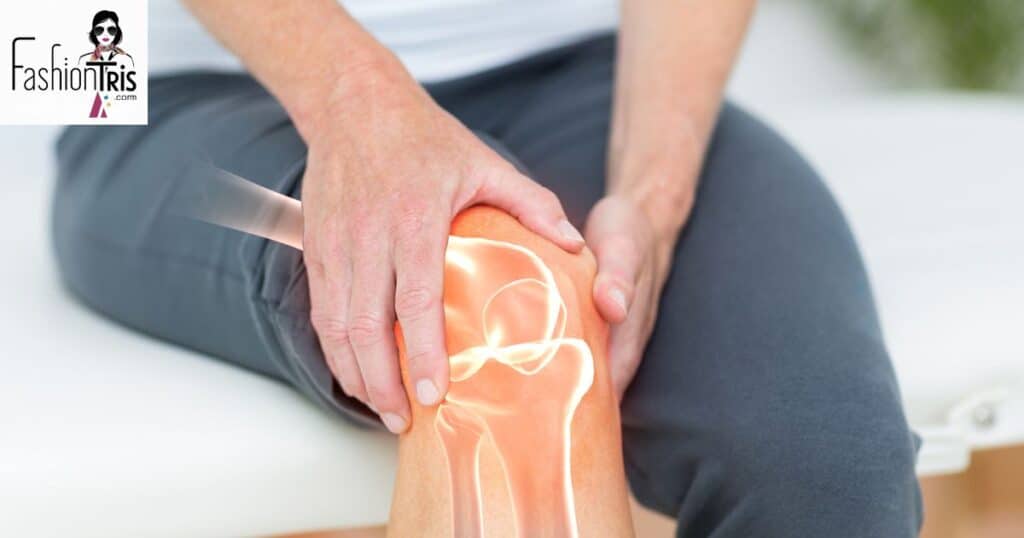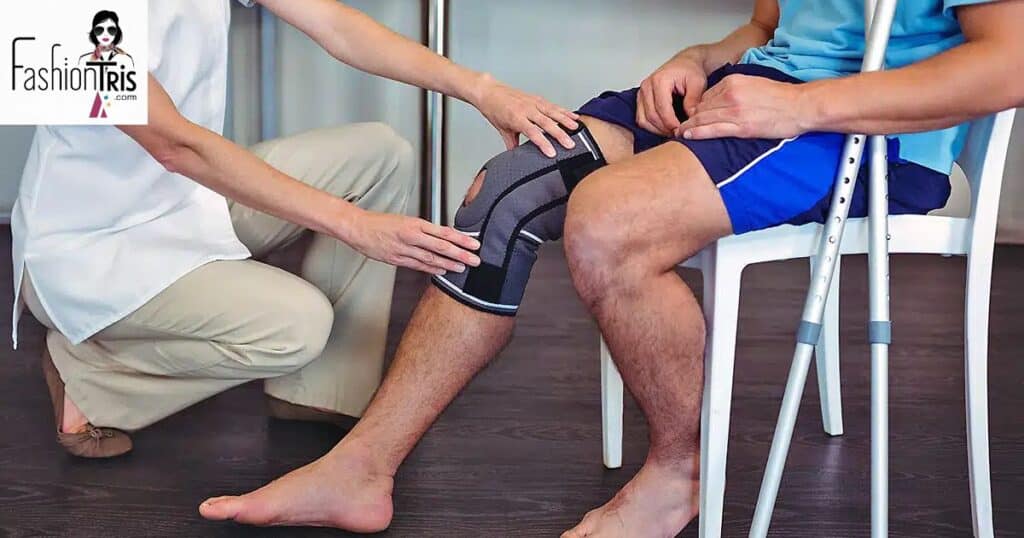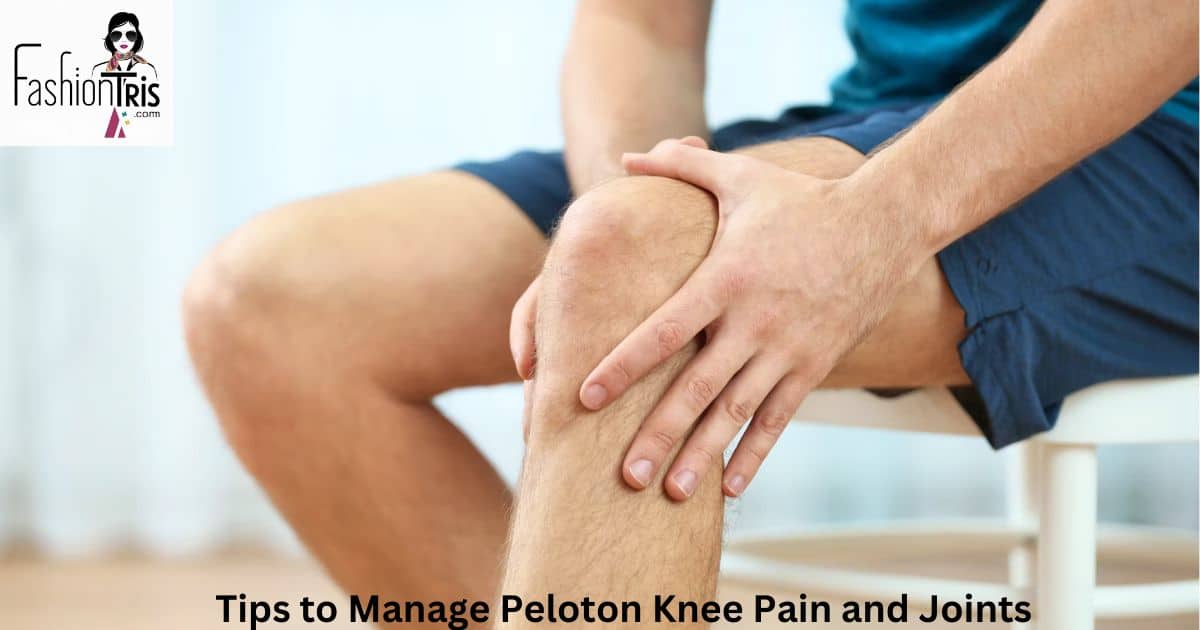Expert Tips to Manage Peloton Knee Pain and Joints refers to a set of recommendations and strategies provided by fitness professionals and medical experts to help Peloton users alleviate.
Peloton has revolutionized the way people approach indoor cycling, offering a convenient and engaging workout experience. However, as with any high-impact exercise, there is a risk of developing knee pain or joint discomfort, especially if proper form and precautions are not followed.
By implementing expert tips and techniques, Peloton enthusiasts can effectively manage and mitigate these issues, ensuring a safe and enjoyable cycling journey. From warm-up routines and bike adjustments to cross-training and recovery strategies, this comprehensive guide will equip you with the knowledge and tools to keep your knees and joints healthy while you pedal your way to fitness goals.
Is Peloton Good for Knees?
Peloton can be good for knees, but it depends on various factors and proper precautions being taken. Here’s a more detailed assessment:
Pros
- Low-impact: Cycling is generally a low-impact exercise, which puts less stress on the knee joints compared to high-impact activities like running or jumping.
- Controlled movement: The stationary nature of Peloton bikes allows for a controlled and consistent cycling motion, reducing the risk of sudden impacts or twists that can harm the knees.
- Adjustable settings: Peloton bikes offer adjustable seat heights, handlebar positions, and resistance levels, allowing users to find a comfortable and biomechanically correct setup that minimizes knee strain.
Cons
- Repetitive motion: The repetitive cycling motion can lead to overuse injuries or strain on the knee joints, especially if the bike is not fitted correctly or if the user has pre-existing knee issues.
- High resistance: Pushing against high resistance levels can put additional stress on the knees, increasing the risk of injury if proper form is not maintained.
- Improper form: Poor cycling technique, such as excessive knee bend or improper foot positioning, can place unnecessary strain on the knee joints.
To mitigate potential knee issues with Peloton, it is crucial to follow proper bike setup guidelines, warm up adequately, maintain good form, and gradually increase resistance levels. Additionally, incorporating strength training, stretching, and cross-training can help support knee health and prevent injuries.

How Can Peloton Be Good for Your Knees?
You’ve provided an excellent outline of the key ways in which Peloton can be beneficial for knee health. Here’s an elaboration on each point:
Low-Impact Exercise
Cycling is a low-impact exercise, which means that it places minimal stress on the joints, especially the knees. Unlike high-impact activities like running or jumping, cycling involves a smooth and circular motion that reduces the jarring forces on the knees. This low-impact nature makes Peloton an ideal choice for individuals with knee issues or those looking to protect their joints while still getting an effective cardiovascular workout.
Strengthens Surrounding Muscles
Peloton workouts engage and strengthen the muscles surrounding the knee joint, including the quadriceps, hamstrings, and calf muscles. Stronger muscles provide better support and stability for the knee, reducing the strain and stress on the joint itself. This increased muscular strength can help prevent knee injuries and alleviate existing knee pain.
Improves Range of Motion
The cycling motion on a Peloton bike involves a full range of motion for the knee joint. This consistent movement can help improve flexibility and range of motion in the knees, which is beneficial for overall joint health and mobility. Maintaining a good knee range of motion can also reduce the risk of future injuries and discomfort.
Customizable Workouts:
Peloton’s versatile platform offers a wide range of workout options, allowing users to customize their rides based on their individual needs and fitness levels. This customization includes adjusting resistance levels, cadence, and workout intensity, which can be tailored to accommodate knee issues or limitations. By finding the right balance and gradually progressing, Peloton users can improve knee strength and flexibility without overloading the joints.
It’s important to note that while Peloton can be beneficial for knee health, proper bike setup, warm-up routines, and cool-down practices are crucial to maximize the benefits and minimize the risk of injury.
How Peloton Can Be Bad for Your Knees?
You’ve outlined some excellent points on how Peloton can be bad for your knees if certain precautions are not taken. Here’s an elaboration on each end:
Incorrect Bike Fit
Proper bike fit is essential for minimizing strain on the knees. If the bike seat is too low or too high, or if the handlebar position is not adjusted correctly, it can lead to improper knee alignment and excessive stress on the joint. An incorrect bike fit can cause the knees to bend excessively or not enough, leading to potential injuries or discomfort.
Overdoing It
Overtraining or pushing too hard too soon can put excessive strain on the knees. Peloton’s engaging platform and competitive leaderboards may tempt some users to overexert themselves, increasing the risk of overuse injuries or joint pain. It’s crucial to gradually increase intensity and duration, listen to your body, and take rest days when needed.
Ignoring Proper Cleat and Cycling Shoe Fit
Proper cleat and cycling shoe fit are essential for efficient pedaling and minimizing knee strain. If the cleats are not positioned correctly or if the shoes don’t fit properly, it can cause misalignment and uneven pressure on the knees, leading to potential issues like patellar tendinitis or knee pain.
Skipping Warm-Ups
Failing to warm up properly before a Peloton workout can increase the risk of knee injuries. Warm-up exercises help increase blood flow, loosen up the joints, and prepare the muscles for the upcoming activity. Without a proper warm-up, the knees may be subjected to sudden stress and strain, which can lead to discomfort or injury.
Neglecting Post-Cycling Care
Proper post-cycling care, including stretching and recovery exercises, is crucial for maintaining knee health. Neglecting to cool down and stretch after a Peloton workout can lead to muscle tightness and joint stiffness, which can exacerbate existing knee issues or increase the risk of future problems.
To mitigate the potential negative impact on knees, it’s essential to prioritize proper bike setup, gradually increase intensity, incorporate warm-ups and cool-downs, and listen to your body’s signals.

You might want to check: Peloton vs IFIT – Which one is best?
How Can You Reduce Knee Injuries?
You’ve provided an excellent list of strategies to help reduce the risk of knee injuries while using Peloton. Here’s an elaboration on each point:
Ensure Proper Bike Fit
Proper bike fit is crucial for minimizing strain on the knees and preventing injuries. Make sure to adjust the seat height, handlebar position, and cleat placement according to your body proportions. A professional bike fitting can help optimize your position on the bike, ensuring proper knee alignment and reducing excessive strain on the joints.
Warm-up Properly
Before starting any Peloton workout, it’s essential to warm up adequately. Warm-up exercises help increase blood flow, loosen up the joints, and prepare the muscles for the upcoming activity. A proper warm-up can include light cardio, dynamic stretches, and mobility exercises targeting the lower body and core muscles.
Wear Appropriate Cycling Shoes
Investing in high-quality cycling shoes with proper cleat positioning can significantly reduce knee strain and improve pedaling efficiency. Cycling shoes should provide a secure fit and adequate support for the feet, helping to distribute the pedaling forces evenly and minimizing unnecessary stress on the knees.
Listen to Your Body
Pay attention to any discomfort or pain you may experience in your knees during or after a Peloton workout. If you experience persistent pain or swelling, it’s crucial to take a break and consult with a healthcare professional. Pushing through pain can lead to more severe injuries and prolong recovery time.
Incorporate Strength Training
Incorporating strength training exercises into your fitness routine can help strengthen the muscles surrounding the knee joint, such as the quadriceps, hamstrings, and calf muscles. Strong supporting muscles can help stabilize the knee joint, reducing the risk of injury and improving overall joint health.
it’s essential to prioritize recovery and rest days, allowing your body to recover and repair. Incorporating stretching, foam rolling, and other recovery techniques can help reduce muscle tightness and promote joint mobility.
Symptoms and Remedies for Cycling Knee Pain
Cycling is a low-impact exercise, but repetitive motion and improper form can lead to knee pain, which can be frustrating and discouraging. Here are some common symptoms of cycling knee pain and remedies to help you find relief and recover.
Symptoms
- Dull ache or sharp pain around or behind the kneecap
- Swelling or stiffness in the knee joint
- Popping or grinding sensations in the knee during pedaling
- Increased pain when climbing hills or pushing against resistance
Comfort and Recovery
- Rest: Take a break from cycling if the pain persists or worsens, allowing your knee to recover.
- Ice and anti-inflammatory medication: Apply ice packs to the affected area and consider taking over-the-counter anti-inflammatory medication to reduce swelling and pain.
- Massage and stretching: Gently massage the surrounding muscles and stretch the quadriceps, hamstrings, and calves to alleviate tension and promote blood flow.
Adjust Your Bike Settings:
- Seat height: Ensure your seat is at the proper height, allowing for a slight bend in the knee at the bottom of the pedal stroke.
- Cleat position: Adjust the cleat position on your cycling shoes to ensure proper knee alignment and reduce strain.
- Handlebar reach: Adjust the handlebar distance to maintain a comfortable and upright riding position, preventing excessive forward lean and knee strain.
Physical Therapy
- Consult a physical therapist: A licensed professional can evaluate your condition, identify the root cause of your knee pain, and provide targeted exercises and stretches to address imbalances and strengthen supporting muscles.
- Strengthen surrounding muscles: Focus on exercises that target the quadriceps, hamstrings, and calf muscles to improve knee stability and reduce strain.
- Improve flexibility: Incorporate stretching routines to increase the range of motion and flexibility in your hips, knees, and ankles.
Gradual Return to Cycling
- Start slowly: Once the pain subsides, gradually reintroduce cycling by starting with shorter, lower-intensity rides and increasing progressively duration and resistance.
- Cross-train: Incorporate low-impact cross-training activities like swimming or walking to maintain fitness without further aggravating your knee.
- Listen to your body: Pay attention to any recurring pain or discomfort and adjust your workout intensity or duration accordingly.
A healthcare professional should evaluate persistent or severe knee pain to rule out any underlying conditions or injuries. Early intervention and proper management can help you recover and return to cycling without further complications.

Is treadmill walking or biking better for knees?
When it comes to low-impact exercise options that are easier on the knees, biking, and treadmill walking are generally considered better choices than running. Here’s a closer look at how each activity affects the knees:
Biking
- Cycling is a low-impact exercise that puts minimal stress on the knees and other weight-bearing joints.
- The circular motion of pedaling is a smooth and controlled movement, which reduces the jarring impact that can strain the knees.
- Biking does not involve repetitive pounding or high-impact forces on the joints, making it a knee-friendly option for individuals with existing knee problems or those looking to prevent knee injuries.
Treadmill Walking
- Walking on a treadmill is also a low-impact exercise that is generally easier on the knees than running.
- The treadmill’s cushioned surface can help absorb some of the impact forces that would otherwise be transmitted to the knees during walking on more complex surfaces like concrete or asphalt.
- Treadmill walking allows for a controlled pace and stride, reducing the risk of excessive stress on the knees.
- However, it’s essential to maintain proper walking form and avoid overstriding, which can put unnecessary strain on the knees.
While individual factors such as weight, existing conditions, and proper technique play a role, most experts generally recommend biking or treadmill walking over running for those with knee concerns or looking to minimize the impact on the knees.
Peloton Rides for Your Bad Knees
When it comes to Peloton rides for individuals with bad knees, some options are better than others. Here’s a breakdown of the rides you mentioned, ranked from most knee-friendly to least knee-friendly:
Low Impact Ride (45 minutes)
This type of ride is designed to be easy on the joints, making it an excellent choice for those with knee issues. Low-impact rides typically involve a lower resistance level and a more moderate cadence, reducing the stress on the knees while still providing a challenging workout.
Power Zone Endurance Ride (60 minutes)
Power Zone Endurance rides focus on sustained efforts at lower to moderate intensities. While these rides can be long, the lower intensity and controlled movements can be more manageable on the knees compared to high-intensity or high-resistance rides.
Pro Cyclist Ride (30 minutes)
Pro Cyclist rides often mimic the training styles of professional cyclists, which may include intervals, hills, and varying cadences. While these rides can be intense, they tend to avoid excessive resistance or high-impact movements, making them a potential option for those with knee issues.
HIIT Ride (20 minutes)
High-intensity interval Training (HIIT) rides involve periods of intense effort followed by recovery periods. These rides can put significant stress on the knees due to the high-intensity bursts and sudden changes in resistance or cadence. HIIT rides may not be the best choice for those with knee problems.
Climb Ride (20 minutes)
Climb rides typically involve sustained efforts at high resistance levels, simulating the experience of climbing hills or mountains. The high resistance and prolonged seated position can put a significant amount of stress on the knees, making these rides potentially challenging for individuals with knee issues.
It’s important to note that individual factors, such as the severity of knee problems, fitness level, and proper bike setup, can also influence how well a person tolerates different types of rides.
How do I adjust Peloton for knee pain?
Adjusting your Peloton bike properly is crucial for minimizing knee pain and ensuring a comfortable and safe riding experience. Start by setting the saddle height correctly, with your knee slightly bent at the bottom of the pedal stroke. The proper saddle fore-aft position is also essential, as too far forward or back can cause knee strain.
Pay attention to cleat positioning on your cycling shoes to ensure optimal foot alignment. Consider using lower resistance levels or adjusting the cadence to reduce high-impact forces on your knees. Consult a professional bike fitter or physical therapist if needed to optimize your bike setup and minimize knee discomfort during your Peloton rides.

Frequently Asked Questions
How can I adjust my Peloton bike to reduce knee pain?
Proper bike fit is crucial. Ensure your saddle height is adjusted so that your knee has a slight bend (about 5-10 degrees) at the bottom of the pedal stroke. Additionally, check that your saddle is just a short distance forward or back, as this can also contribute to knee pain.
Are there specific Peloton rides or intensities I should avoid with knee pain?
High-resistance climbs, and intense HIIT rides can put significant stress on your knees. Instead, opt for low-impact rides, power zone endurance rides, or rides with moderate resistance levels.
How can I warm up properly before a Peloton ride to protect my knees?
Dedicate 5-10 minutes to a proper warm-up, including gentle cycling, dynamic stretches for your quadriceps, hamstrings, and calves, and foam rolling if needed. This can help increase blood flow and prepare your joints for the workout.
Are there any off-bike exercises or stretches that can help with Peloton knee pain?
Strengthening exercises for your quadriceps, hamstrings, and core muscles can help support your knees during rides. Stretches like the quad stretch, hamstring stretch, and calf raises can also help maintain flexibility and reduce tightness around the knee joint.
When should I seek professional help for Peloton’s knee pain?
If your knee pain persists or worsens despite adjustments and modifications, it’s best to consult a physical therapist or orthopedic specialist. They can evaluate the underlying cause of your pain and provide personalized treatment recommendations, such as specific exercises, bracing, or other interventions.
Final Thoughts
While Peloton offers an incredible indoor cycling experience, it’s crucial to prioritize knee health and take proactive measures to prevent or manage knee pain. By following expert tips such as proper bike setup, incorporating warm-ups and cool-downs, gradually increasing intensity, and listening to your body’s signals, you can maximize the benefits of Peloton while minimizing the risk of knee injuries.
Seeking guidance from professionals, such as bike fitters or physical therapists, can provide personalized solutions and ensure a safe and enjoyable cycling journey. With the right approach, Peloton enthusiasts can maintain their passion for cycling while protecting their knees and joints for the long haul.

With over 10 years of experience working in the fashion industry, I bring a unique expertise to my role. I am looking forward to sharing my knowledge and insights on the latest trends with my readers.











